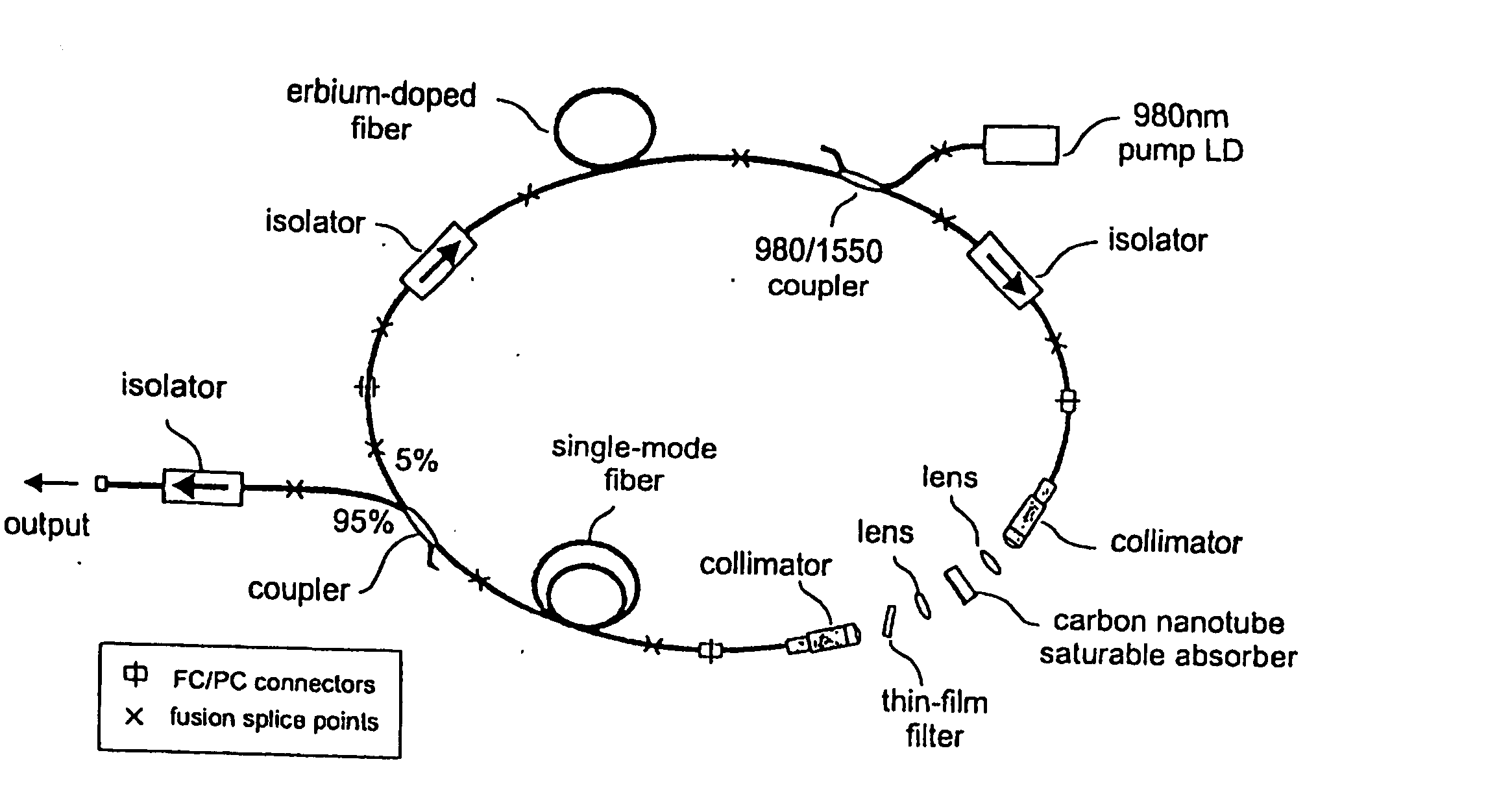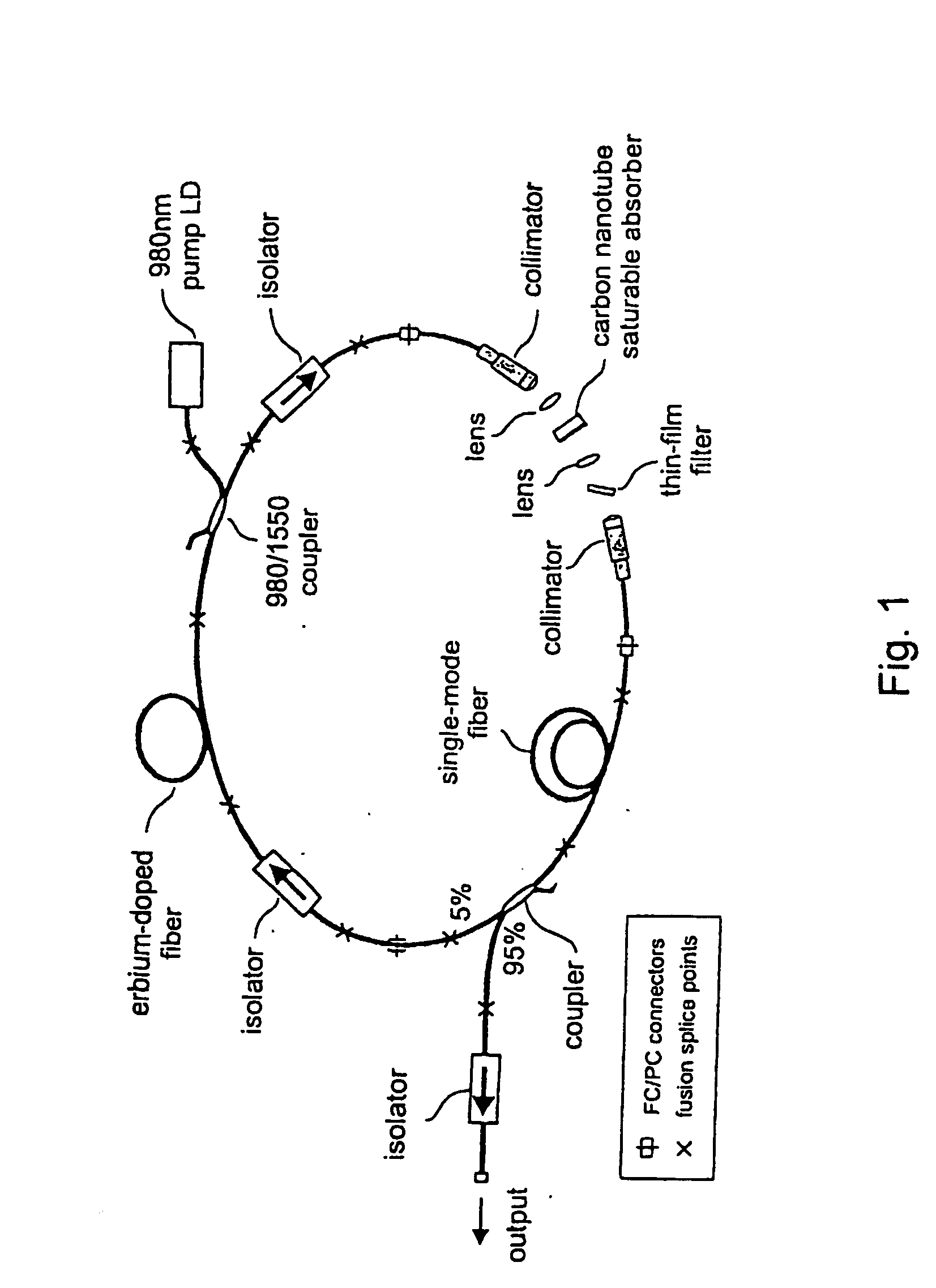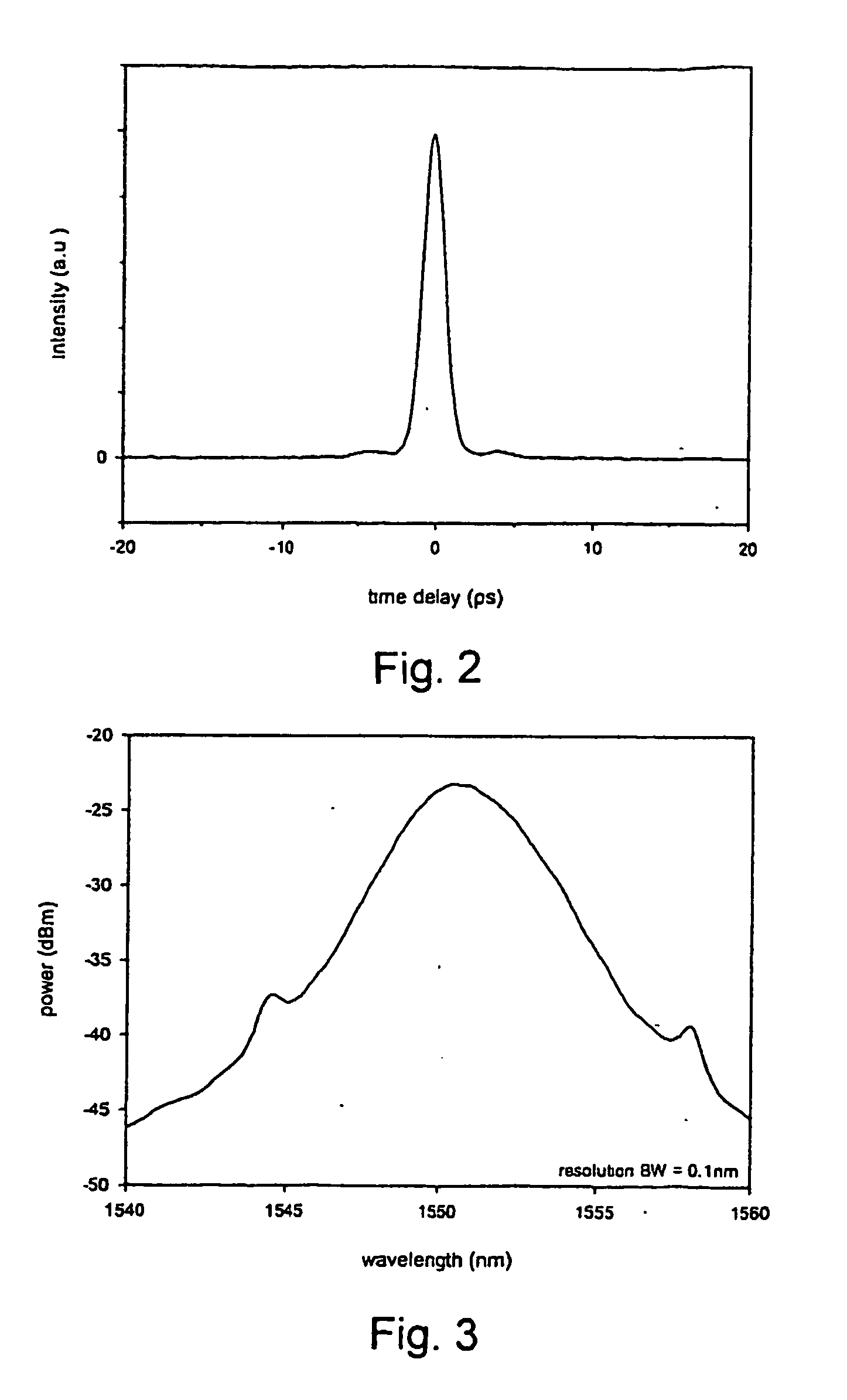Optical pulse lasers
- Summary
- Abstract
- Description
- Claims
- Application Information
AI Technical Summary
Benefits of technology
Problems solved by technology
Method used
Image
Examples
example 1
Preparation of Carbon Nanotubes (CNT) for Use as Non-Linear Optical and / or Saturable Absorber Materials
[0095] CNT can be synthesized by any means such as HiPCo, CVD, laser-oven / ablation and the arc-discharge techniques. In our particular example here, the CNT are formed by laser ablation. A target graphite rod consisting of 0.45 atomic % each of Nickel and Cobalt, placed in an oven heated at 1250° C., under 500 Torr of Argon gas flow, was ablated using the second-harmonics of a Nd:YAG pulse laser with energy of >300 mJ / pulse. At the ablated region on the carbon rod, at temperate >3000° C., the evaporated carbon atoms, assisted by the Ni / Co growth catalysts, condenses to form CNT. After laser ablation, the sample is heated (to a temperature of greater than or equal to about 120° C.) in a high vacuum to remove to vaporize substances such as fullerene with impurities. Next the sample is washed with toluene and filtered with fine mesh. Next, the sample is washed and dispersed with eth...
example 2
Device Elements Having Layers, Films or Coatings of CNT
[0096] Various methods can be applied to obtain layers, films or coatings of CNT on substrates as illustrates in the figures herein. For example, a sample of CNT powder can be mixed with any alcohol, preferably a volatile alcohol, such as ethanol, and sprayed onto a surface.
[0097] Layers containing CNT can also be prepared by mixing the CNT powder into an adhesive or glue, such as a U-V epoxy. Preferred adhesives are those that are transparent at the intended operating wavelength or wavelengths and have a low melting point. Similarly, layers of CNT can be formed in polymers or plastics, such as polyimide. A polymer such as a polyimide can be used to form a CNT layer on or between substrates. The amount of CNT added in a layer, film or coating depends on how much absorption is desired for a given application.
[0098] CNT powders can be introduced into optical fibers. For example, CNT can be mixed into a polymer solution, which i...
PUM
 Login to View More
Login to View More Abstract
Description
Claims
Application Information
 Login to View More
Login to View More - R&D
- Intellectual Property
- Life Sciences
- Materials
- Tech Scout
- Unparalleled Data Quality
- Higher Quality Content
- 60% Fewer Hallucinations
Browse by: Latest US Patents, China's latest patents, Technical Efficacy Thesaurus, Application Domain, Technology Topic, Popular Technical Reports.
© 2025 PatSnap. All rights reserved.Legal|Privacy policy|Modern Slavery Act Transparency Statement|Sitemap|About US| Contact US: help@patsnap.com



